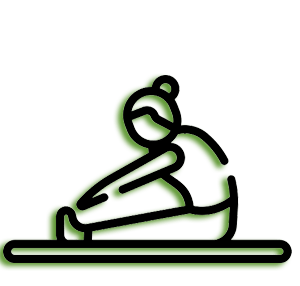
05 May SHAPE-UP CHALLENGE: WEEK 4 — THE BENEFITS OF FLEXIBILITY
Welcome to Week 4 of the Shape-Up Challenge! This week, we’re going to talk about the importance of flexibility and some of the benefits it can provide. Our goal is for you to begin incorporating a flexibility component into your exercise program.
So what is flexibility? According to the American College of Sports Medicine (ACSM), “Flexibility is the ability to move a joint through its complete range of motion.” The ACSM also notes that flexibility is specific to each joint and depends on the type of joint and the arrangement of muscles and other connective tissues surrounding the joint. Increased flexibility may also provide benefits like reduced muscle tension, increased relaxation, improved posture and functional ability, relief of low back pain, and reduced possibility of injury.
Do these sound like some benefits you’d like? The Department of Health and Human Services’ Physical Activity Guidelines for Americans, released in 2008, state that, “When done properly, stretching increases flexibility.” Bruce Croom, personal trainer at The Energy Club in Arlington, VA, and owner of Fitness Xtra, also notes that “Good flexibility and strength training go hand in hand, which makes stretching an essential component of any exercise program.”
What’s up for debate is exactly how to stretch. Although there are different theories and opinions on stretching, the ACSM does provide some conservative guidelines for the general healthy population. They recommend a minimum of two to three sessions per week, utilizing the major muscle and/or tendon groups. They also recommend stretching to a point of mild discomfort.
So what types of exercises to promote flexibility can be helpful? You can always stretch on your own and don’t need any equipment other than a mat or towel. Your Center for Medical Weight Loss physician can recommend stretches and other exercises that are appropriate for your level.
If you’re looking for some guided stretches, the practice of yoga has surged in popularity in recent years and can be beneficial for both flexibility and stress reduction. While there are many different types of yoga, the Mayo Clinic notes that a core component of most yoga classes is the poses, which are a series of movements designed to increase flexibility and strength. In fact, a key benefit of yoga is increased flexibility, as the poses are designed to put joints through their full range of motion. The Mayo Clinic also notes that yoga can help with weight loss, stress reduction, and management of chronic health conditions like depression, anxiety, and sleep disorders.
Of course, it’s essential to get clearance from your physician before starting or modifying any exercise program, and yoga is no exception. However, it’s also important to find the right yoga instructor and class for you. Make sure you look for a beginner-level class, and discuss any health concerns you have with the instructor prior to beginning. The instructor should be able to modify poses to accommodate you. Make sure you understand the proper form for each pose and ask for help whenever you feel you need it.


